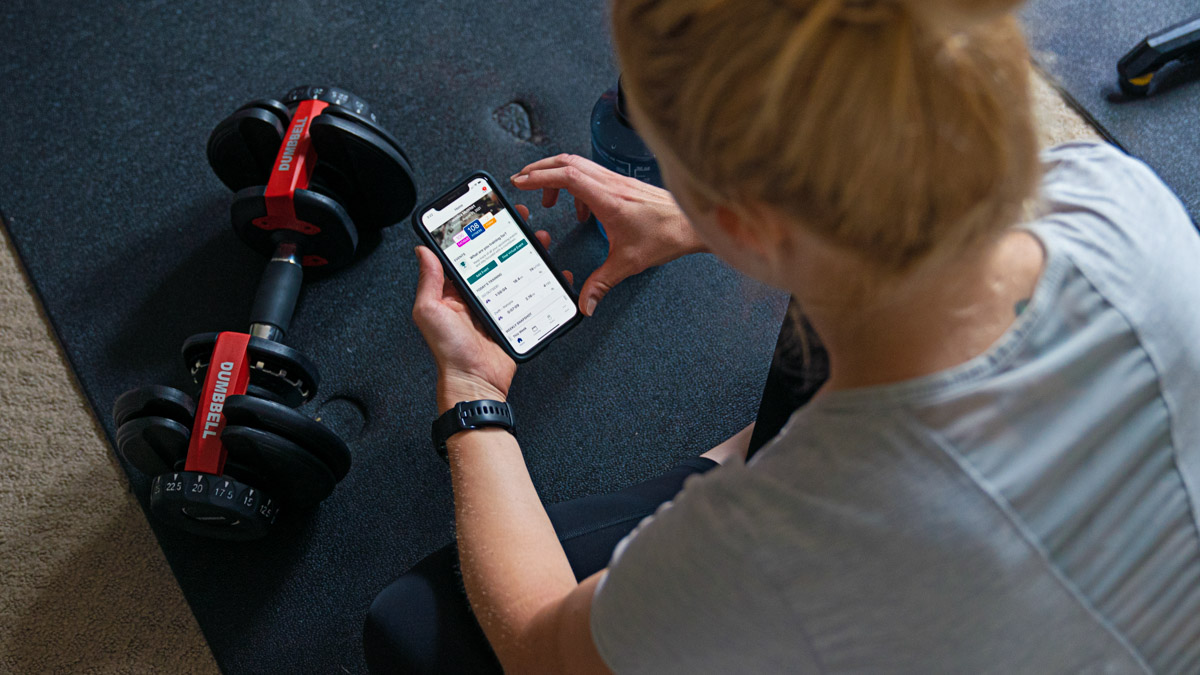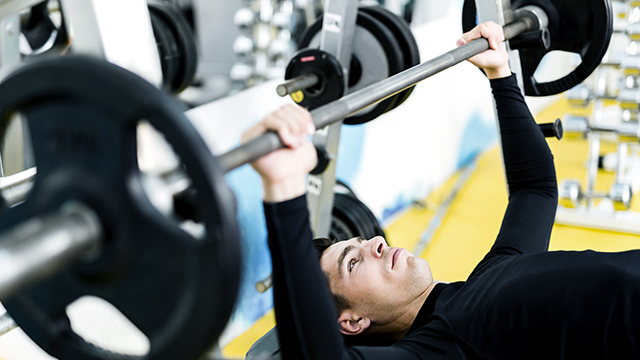Around 10-12 weeks before your peak event of the season, your cycling training should start focusing on specific race-day needs. As such, strength training during this period should complement your training on the bike and not detract from it. Focusing on sport-specific exercises and improving core endurance should be at the top of your list, along with keeping overall muscle balance to prevent injury.
The closer you get to your event, the more you’ll need to maintain strength while simultaneously reducing the Training Stress Score (TSS) of your strength sessions. This article will address how your strength training sessions should change as race day approaches and will introduce TSS as a way to calculate your total load for weight lifting.
Adapting Strength Training for Aerobic Gains
Cycling is an aerobic sport. From 20-minute time trials to ultra-endurance races, most of the energy produced during a bike race is done so via aerobic pathways. Pedaling for one hour with an average cadence of 75 RPMs will have you turning the cranks 4,500 times, or the equivalent of 2,250 repetitions per leg. On a multi-hour ride, you’ll turn the cranks tens of thousands of times — that’s about as aerobic as any exercise can get.
Strength training, on the other hand, is not particularly aerobic but has many benefits for cyclists. It builds overall muscle endurance, strengthens connective tissue, and improves core strength. Core strength, in particular, is a key ingredient in bike handling skills and can make or break your efficiency on rugged terrain.
The question, therefore, is not if cyclists should strength train but how they can tailor their strength sessions to promote cycling-specific gains.
Circuit Training
One such style of strength training is circuit training, which is performed by working one set of an exercise and then immediately moving to the next exercise with little to no recovery time in between. Circuit training is, therefore, on the aerobic side of strength training, especially if you incorporate short bouts of aerobic exercise into the mix like stair/hill run repeats or short 3- to 5-minute spins.
Running stairs or inclines is a cycling-specific exercise because it is performed on the front of the foot — similar to how power is produced on a pedal. When you can incorporate strength exercises that relate to cycling, such as single-leg exercises, the more your strength gains made in the gym will translate to increased power on the bike.
Now that we’ve gone over the basics of cycling-specific strength training, let’s dive into how strength workouts should change as you get closer to race day. I’ve included key exercises and sample workouts for the build and peak phases, but you can also check out this free sample week of an example strength plan.
Strength Training in the Early Build Phase
From long days in the saddle to early season races, the early build phase (i.e., the race preparation phase of training that comes about 10-12 weeks before your first “A” race) contains consistent weeks of volume on the bike and some increased intensity. Building muscle endurance via strength training is a good focus for this time of the season.
Strength workouts can complement the bike by focusing on higher repetitions with a mix of general strength and sport-specific moves. Circuit training with free weight exercises like squats and deadlifts along with sport-specific aerobic bouts of cycling and stair running make for good early build phase workouts.
Plyometrics can also be used, but with caution. Plyometric workouts (aka, jump training) can provide many benefits, from recruiting more muscle fibers to strengthening connective tissue more than aerobic exercise can alone. Plyometrics should only be done at the start of a strength session when you’re fresh and able to work explosive moves. Before incorporating plyometrics, a strong base of strength needs to be established through an anatomical adaptation phase or a heavy lift phase at least 4-6 weeks prior to starting.
Key Exercises
Front and back squats, deadlifts, overhead presses, and exercises alike to work the core and muscle balance, along with 3- to 5-minute spin sessions or stair runs for additional aerobic work.
Sample Workout
15-20 repetitions per set, with long hold times for isometric exercises, worked in a circuit. 3-5 rounds of a circuit depending on how many exercises are in each circuit. A 45- to 60-minute workout is sufficient. Volume can be one to two times per week.
Strength Training in the Late Build Phase
When you’re getting closer to important race dates in the late build phase, it’s important to focus your attention on power gains. Stepping away from strength training circuits, slightly reducing repetitions and sets, and focusing on one exercise at a time will help reduce the TSS of the workout. A mix of core and weighted exercises along with sport-specific exercises, such as single-leg exercises, is a good focus during this time.
Workout frequency should be based on how well you’re responding on the bike. If you’re feeling fatigued on the bike, then strength training beyond one or two days a week is not needed. Rather, focusing on core maintenance and stretching will provide more benefits.
Key Exercises
Single leg exercises such as lunges, single-leg deadlifts, heel raises, and step-ups will work leg strength and imbalances. Isometric core work such as reverse, side, and front planks will help core endurance, and weighted exercises such as renegade rows and squats improve muscle balance and strength.
Sample Workout
12-15 repetitions per set, working 2-3 sets of one exercise at a time. Continue with long hold times for isometric exercises. Volume can be 1-2 times a week.
Strength Training in the Peak Phase
During the peak phase and race weeks, you should cut back on strength workouts and keep things as sport-specific as possible. It is time to keep your muscles flexible and balanced without affecting workouts on the bike.
During race weeks, keeping your core engaged and stretching to keep muscles loose are a few key things to focus on. Short 20- to 30-minute core and stretch sessions with low TSS are all that’s needed.
Key Exercises
Use bodyweight exercises such as burpees, lunges, planks, and step-ups for maintenance, along with handlebar pushups, stair runs, and bent-over rows for sport-specific work.
Sample Workout
12-15 repetitions per set, working one to two sets of one exercise at a time. Volume can be 1-2 times a week for peak weeks and one early week workout for race weeks.
Quantifying Strength With TSS
Adding a TSS value to your strength workouts is uncommon, but can be a good way to quantify your strength training load each week. While this attention to detail is not everyone’s cup of tea, knowing the stress score for a strength training session will help you dial in your strength training load as needed.
Over time, comparing your strength training loads with power gains and losses on the bike will tell the tale.
Weightlifters use tonnage, or the total weight lifted per session, to quantify the intensity of their workouts. For endurance athletes, strength training can be quantified by using tonnage to calculate a TSS value along with Rating of Perceived Exertion (RPE). But because endurance athletes strength train with both weighted and bodyweight exercises, you’ll need to add a value to bodyweight exercises in order to calculate total tonnage accurately.

How to Calculate Total Load TSS Using Tonnage
When putting a value on bodyweight exercises, keep it simple and consistent. Bodyweight exercises are similar in nature, so create an arbitrary value for each repetition or length of time (e.g, 50 lbs per repetition) and use that across the board with all bodyweight moves. If you want to quantify isometric exercises where you are holding poses like plank, you could assign a value of 50 lb for every 10 seconds of the hold. Remember, the most important aspect is to be consistent across the board.
To get a TSS score, you will need to calculate the total tonnage of the session by multiplying the weight lifted by reps and sets. Then, on a scale of 1-10, assess how hard the session was using RPE. Let’s use the below example to illustrate:
- You just completed 3 sets of 10 exercises at 15 reps each. Each repitition has a value of 50 lb.
- To calculate tonnage, you’ll multiply 3 x 10 x 15 x 50 = 22,500 lb lifted, or just over 10 tons.
- The session was a moderate workout, so you scored it a 5/10 on the RPE scale. That equals a TSS score of 50/100.
- From here, you can divide your total tonnage by TSS to calculate weight lifted for each TSS point. In this example, you’d divide 22,500 lb by 50 to get 450 lb/TSS point.
- This is very useful if you want to increase or decrease the intensity of a strength workout by a certain amount of TSS points. For example, if you want to increase the intensity of your strength workout by 20 TSS points, you would add 9,000 lb of weight to your workout.
Remember that strength training TSS scores don’t need to be super precise. The goal is to simply quantify the workout so that you can compare its TSS to increases and decreases in power on the bike, allowing you to measure whether or not your strength training is actually translating to power gains.
Strength training TSS scores must be added manually post-workout (see screenshot above) and can be used within the PMC chart. This will increase your total TSS for the week which will affect Fatigue, Fitness, and Form readings. Just keep in mind the PMC chart is only telling one part of the story. The other part of the story — and arguably the most important — is how you are feeling on the bike.
References
Friel, J. (2016, February 27). The Weightlifting PMC, Part 2. Retrieved from https://joefrieltraining.com/the-weightlifting-pmc-part-2/








